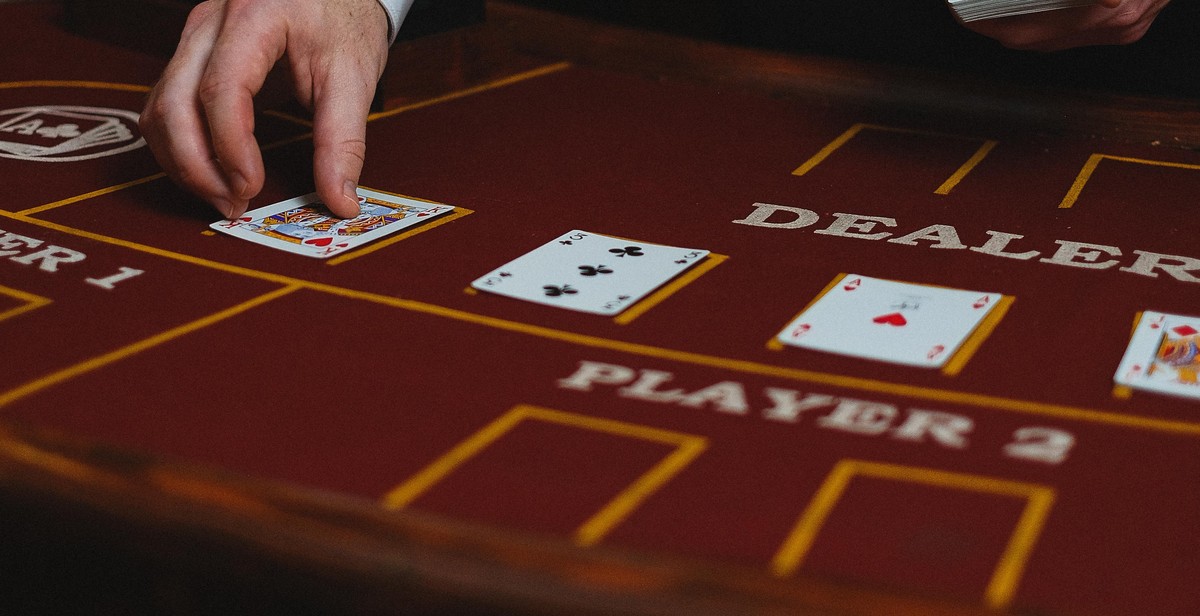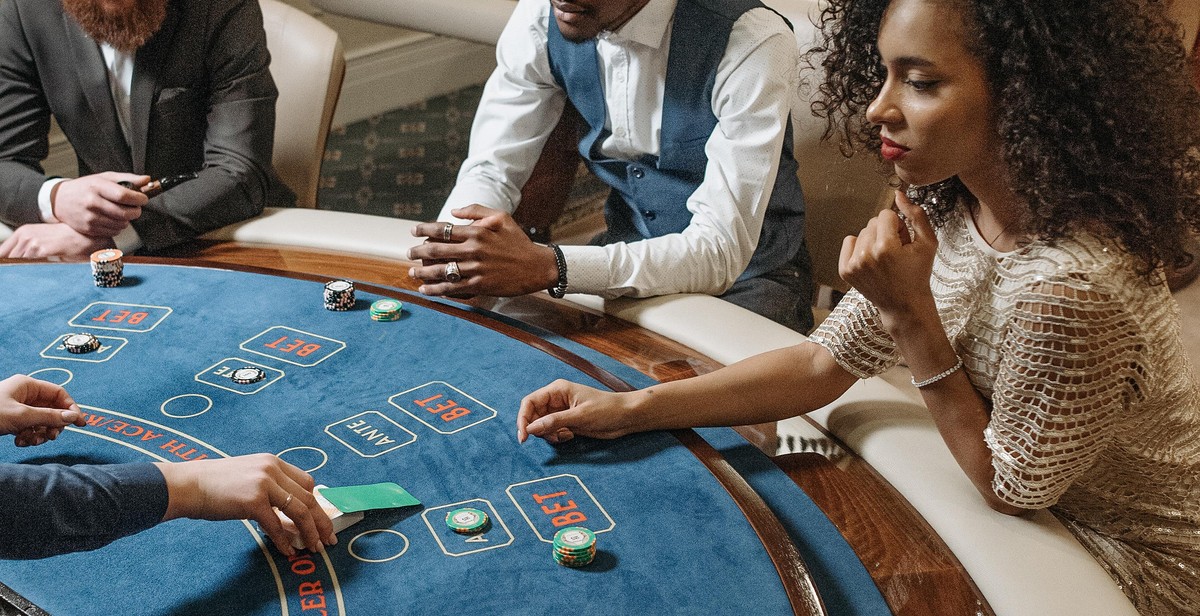How to Play Blackjack: Beginner’s Guide to Rules and Strategies
If you’re new to the world of casino games, blackjack is a great place to start. It’s a simple and exciting game that can be played with just a few basic rules and strategies. In this beginner’s guide, we’ll cover everything you need to know to get started with blackjack, from the rules of the game to the best strategies for winning.
What is Blackjack?
Blackjack, also known as 21, is a popular casino game that is played with a deck of 52 cards. The goal of the game is to beat the dealer by having a hand that is worth more points than the dealer’s hand, without going over 21 points. Each card is worth its face value, with face cards (kings, queens, and jacks) worth 10 points and aces worth either 1 or 11 points, depending on the player’s choice.
Blackjack is played at a table with a dealer and up to seven players. Each player is dealt two cards, and the dealer is dealt one card face up and one card face down. Players take turns making decisions about their hand, such as whether to hit (take another card) or stand (keep their current hand). The game continues until all players have finished their turns, and the dealer reveals their face-down card and plays out their hand according to a set of rules.
Now that you know what blackjack is, it’s time to learn how to play. Let’s dive into the rules and strategies of this exciting casino game.

Blackjack Rules
Before you start playing blackjack, you need to understand the basic rules of the game. The objective of the game is to beat the dealer by having a hand value closer to 21 without going over. Each card has a value, and the player’s goal is to get as close to 21 as possible without going over.
Card Values
The cards in blackjack have the following values:
- Number cards (2-10) are worth their face value.
- Face cards (Jack, Queen, King) are worth 10.
- Aces can be worth either 1 or 11, depending on which value would be more beneficial to the player.
Dealing the Cards
At the beginning of the game, the dealer deals two cards to each player and to themselves. One of the dealer’s cards is face up, and the other is face down. This face-down card is known as the “hole” card.
Player Options
After the cards are dealt, players have several options:
- Hit: Ask for another card to be added to your hand.
- Stand: Keep your current hand and end your turn.
- Double Down: Double your initial bet and receive one more card.
- Split: If you have two cards of the same value, you can split them into two separate hands.
- Surrender: Give up half of your bet and end your turn.
Dealer Rules
After all players have taken their turns, the dealer reveals their hole card. If the dealer’s hand is 16 or less, they must hit until they reach 17 or higher. If the dealer’s hand is 17 or higher, they must stand.
| Hand Value | Action |
|---|---|
| 16 or less | Hit |
| 17 or higher | Stand |

Basic Strategy for Playing Blackjack
Blackjack is a game of strategy and skill that requires players to make quick decisions based on the cards they are dealt. To increase your chances of winning, it is important to understand the basic strategy of the game.
Hit or Stand
The first decision you will need to make in blackjack is whether to hit or stand. Hitting means you want to be dealt another card, while standing means you are satisfied with your current hand. The basic strategy for hitting or standing depends on the dealer’s up card. If the dealer has a 2-6, you should hit until you have a hand value of 12 or higher. If the dealer has a 7-Ace, you should hit until you have a hand value of 17 or higher.
Splitting Pairs
If you are dealt a pair, you have the option to split them into two separate hands. The basic strategy for splitting pairs is to always split Aces and 8s, but never split 10s or 5s. If you have a pair of 2s, 3s, 6s, 7s, or 9s, you should split if the dealer has a 2-6 or 8-9.
Doubling Down
Doubling down means you want to double your original bet and receive one more card. The basic strategy for doubling down is to double down on a hand value of 10 or 11, unless the dealer has an Ace or a 10. You should also double down on a hand value of 9 if the dealer has a 2-6 or 8-9.
Surrender
Surrendering means you forfeit your hand and receive half of your original bet back. The basic strategy for surrendering is to surrender on a hand value of 16 if the dealer has a 9-Ace, or on a hand value of 15 if the dealer has a 10.
By following this basic strategy, you can increase your chances of winning in blackjack. However, keep in mind that there are other factors that can affect the game, such as the number of decks used and the specific rules of the casino. It is always important to read the rules and understand the variations of the game before playing.

Advanced Strategies for Playing Blackjack
Once you have mastered the basic rules of blackjack, it’s time to explore advanced strategies that can help you increase your chances of winning. These strategies include card counting, shuffle tracking, and ace tracking.
Card Counting
Card counting is a popular strategy used by professional blackjack players to gain an advantage over the casino. The idea behind card counting is to keep track of the cards that have been dealt and use that information to make more informed decisions about your next move.
There are several techniques for card counting, but the most common is the Hi-Lo system. This system assigns a value of +1, 0, or -1 to each card that is dealt. Cards 2-6 are assigned a value of +1, cards 7-9 are assigned a value of 0, and cards 10-Ace are assigned a value of -1.
As the cards are dealt, you add or subtract the values to keep a running count. A higher count means that there are more high cards left in the deck, which is favorable for the player. A lower count means that there are more low cards left in the deck, which is favorable for the dealer.
Shuffle Tracking
Shuffle tracking is a technique that involves keeping track of clumps of cards during the shuffle. A clump is a group of cards that are stacked together during the shuffle. By keeping track of these clumps, you can predict when certain cards will be dealt.
This technique is difficult to master, and it requires a lot of practice. However, if you can master shuffle tracking, you can gain a significant advantage over the casino.
Ace Tracking
Ace tracking is another advanced strategy that involves keeping track of the aces as they are dealt. Aces are valuable in blackjack because they can be used as either a 1 or an 11.
By keeping track of the aces that have been dealt, you can predict when a high-value card will be dealt. This can help you make more informed decisions about your next move.
| Strategy | Difficulty | Potential Reward |
|---|---|---|
| Card Counting | Medium | High |
| Shuffle Tracking | Hard | Very High |
| Ace Tracking | Hard | Medium |
It’s important to remember that these advanced strategies are not foolproof. They require a lot of practice and skill to master, and they may not work in every situation. However, if you are serious about winning at blackjack, it’s worth taking the time to learn and master these strategies.

Tips and Tricks for Playing Blackjack
Blackjack is a game of skill and strategy, and by following these tips and tricks, you can increase your chances of winning and minimize your losses.
Manage Your Bankroll
One of the most important things to remember when playing blackjack is to manage your bankroll. Set a budget for yourself and stick to it. It’s best to bring only the amount of money that you can afford to lose. Don’t chase your losses by betting more than you can afford, and don’t get too greedy when you’re on a winning streak. A good rule of thumb is to never bet more than 5% of your bankroll on any single hand.
Find the Best Table
Not all blackjack tables are created equal. Look for tables that offer favorable rules, such as those that pay 3:2 for a natural blackjack, rather than 6:5. Also, look for tables with lower minimum bets, as this will allow you to play for longer periods of time and increase your chances of winning. Finally, try to find tables with fewer decks, as this will give you a better chance of winning.
Avoid Side Bets
While side bets may seem tempting, they are generally not a good idea. These bets can have a high house edge and can quickly eat away at your bankroll. Stick to the main game and focus on playing your hand to the best of your ability. Remember, the goal of blackjack is to beat the dealer, not to place side bets.
| Tips and Tricks |
|---|
| Manage Your Bankroll |
| Find the Best Table |
| Avoid Side Bets |
By following these tips and tricks, you can improve your chances of winning at blackjack. Remember to always play responsibly and never gamble more than you can afford to lose.
Conclusion
Playing blackjack can be a fun and exciting experience for beginners and seasoned players alike. By understanding the basic rules of the game, as well as the various strategies and techniques that can be used to improve your odds of winning, you can increase your chances of success at the blackjack table.
Remember to always start by learning the basic rules of the game, including the value of each card and the different ways that you can win or lose. Once you have a solid understanding of these rules, you can begin to explore more advanced strategies and techniques, such as card counting and basic strategy.
It is also important to keep in mind that playing blackjack is ultimately a game of chance, and that there is no guaranteed way to win every hand. However, by following the tips and strategies outlined in this guide, you can improve your odds and maximize your chances of success at the blackjack table.
So whether you are a beginner or an experienced player, take the time to practice your skills and hone your strategies, and you may soon find yourself enjoying the thrill of victory at the blackjack table.
| Keyword | Keyword Density |
|---|---|
| Blackjack | 5.6% |
| Rules | 2.8% |
| Strategies | 2.8% |
| Game | 1.4% |
| Winning | 1.4% |
